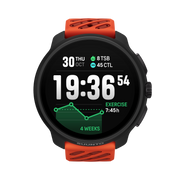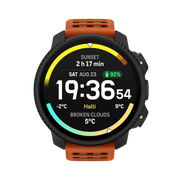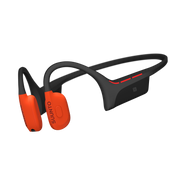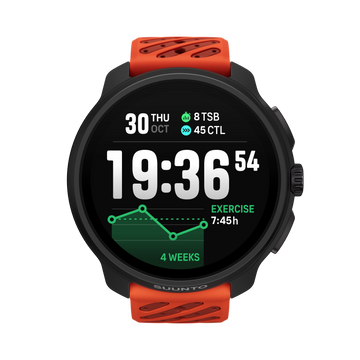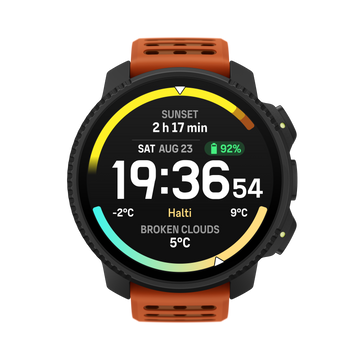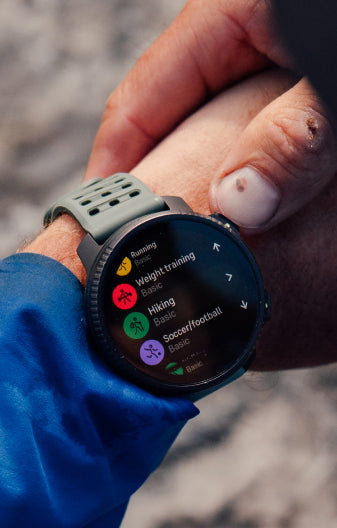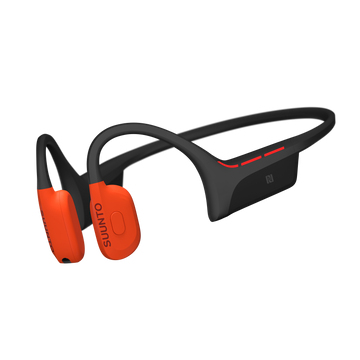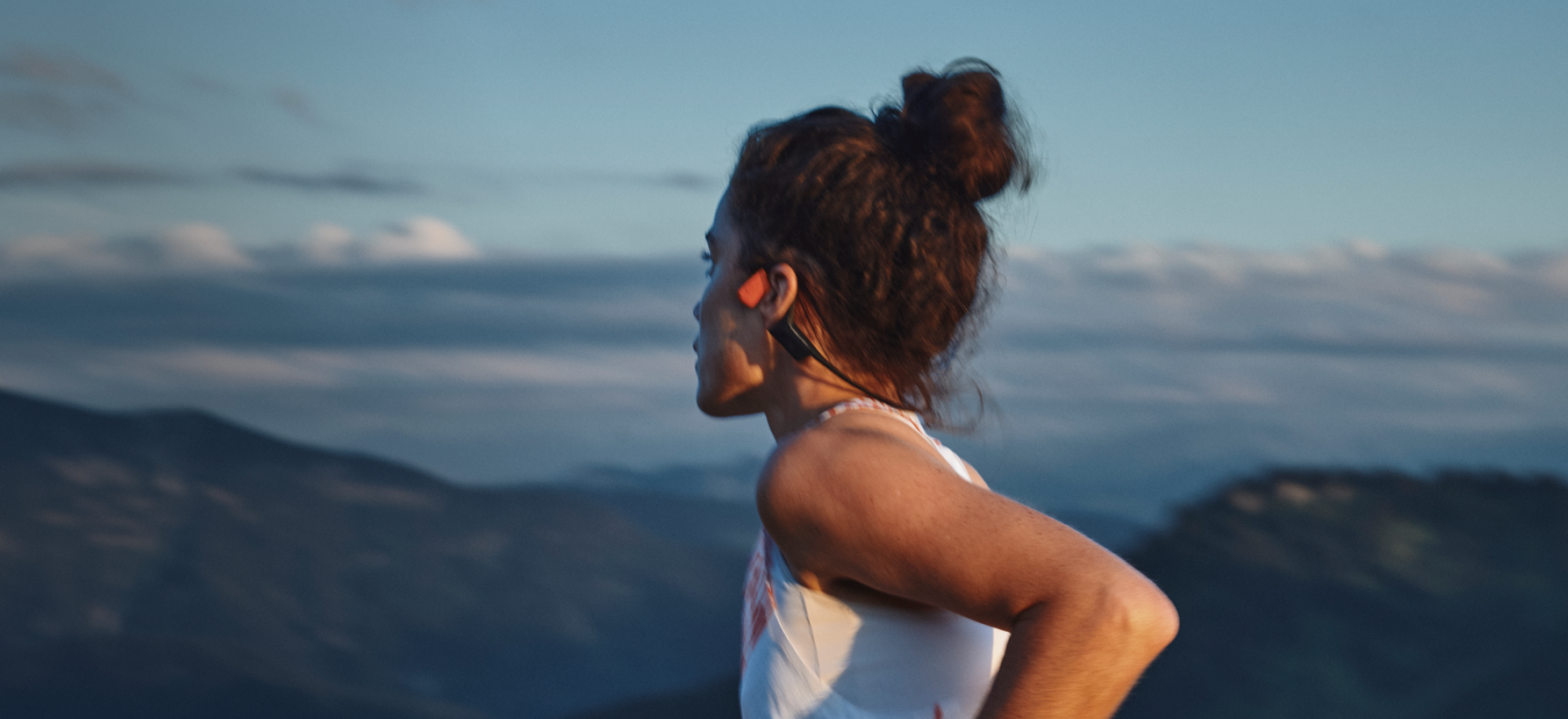

Suunto Blog

10 ways to make your adventures more sustainable
Greg charges his electric car on route to the mountains. © Greg Hill
With the release of his latest film, Electric Greg, skimo legend and Suunto ambassador Greg Hill showed how the adventure lifestyle can be more sustainable. He climbed more than 100 mountains without using any fossil fuel, instead relying on his small electric car to get him into the mountains.
Also a weekday vegetarian who grows his own vegetables, Greg has researched how he can “be a little better'' in terms being kinder to the planet. He says it’s not about being perfect, but just trying to improve incrementally.
“As outdoor enthusiasts we are the ones who appreciate and get so much back from nature, so we should be the ones doing the most to preserve it,” Greg says. “Snowboarder Jeremy Jones is the ideal example of that. He recognized his impacts and looked for ways to change it. In creating Protect our Winters, he enabled change on so many levels, from personal to political. We can all make a difference.”
Follow the cardinal rule
Before even thinking about other ways to be more sustainable, make sure you are following the cardinal rule of outdoor recreation: pack it in, pack it out. “It’s a pretty simple mantra,” Greg says. The only thing you should leave in the outdoors are your footprints, and the only thing you should take are photos.
For a month, Greg restricted himself to cycling to and from all his trips © Greg Hill
Find backyard adventures
Often times, destinations further afield seem more exotic. While it’s great fun to explore far away places, exploring our local recreation areas helps us to feel more connected to the land where we live. It’s fun to get a topographical map of your local area, note points of interest, and visit them all. It’s also a fun adventure project to walk, hike, bike or run every single trail in your local mountain or forest park.
Move to the mountains
If working remotely is a possibility for you, consider moving somewhere closer to the mountains. “If you love adventure, find the ideal town and move there, and then backyard adventure forever,” Greg says. This will result in less travel time, therefore less carbon emissions. And every morning you will look out the window and see the mountains waiting for you!
Greg is a weekday vegetarian. Studies show eating less meat is good for the planet. © Angela Percival / Arcteryx
Use rail when possible
One of the great things about living in Europe is the rail network. Sure, you might need to factor in more time to get to and from the mountains, but using rail, rather than driving a fossil fuel powered car, definitely helps us to be a little better. And after a big day in the mountains you can sit back on the train and enjoy a well earned beer or coffee.
Buy quality gear
In this age of fast fashion and disposable culture, we are conditioned to shop for the best bargain. But the best bargain is often not the best deal. Some outdoor gear – like Suunto watches, for example – have been designed and built to last. It’s also possible to send our watches back for repair, extending their lifespan. Other gear, like these running shoes designed by Salomon, can be recycled and turned into ski boots.
Yes, good quality, durable, hardy gear usually comes with a higher price tag, but ultimately it will save you money in the long run because it will last longer and perform better. While cheap quality products wear out quickly and end up in landfill.
Maintain your gear
To help make your gear last, get professional advice about how to maintain it properly. When you get home from a big hike, for example, clean your footwear properly with the correct cleaner, and keep your leather boots waxed so the skin doesn’t dry out, potentially cracking. And wash your rain gear with washing detergent designed for the job.
Go electric
Buying an electric car is awesome, but if it isn’t possible for you then another option is to rent one when you do visit somewhere by plane. “On the last trip that I had to fly to, I landed and rented an electric car,” Greg says. “It was a Tesla Model X and it was amazing!” Remember, it’s not about being perfect, just a little better.
Reduce microfiber plastic pollution
One of the big challenges for the outdoor gear industry is reducing microfiber plastic pollution. All the plastic-based sport clothing people wear sheds trillions of microfiber plastics when they are washed, which ends up in the ocean. It’s estimated there are now more than one million trillion microfiber plastics in our oceans. That’s about 200 million microfibers for every person on the planet. Ouch.
You can help tackle this problem by choosing to use clothing made of natural materials, such as wool, or you can use a Guppyfriend Washing Bag to prevent microfibers going into the waterway when you wash your plastic-based outdoor clothing.
Choose ethical companies
“Buy from companies that have good ethical policy towards the environment and are pushing change at their corporate level,” Greg says. “Many companies are now working hard at being better.” Visit company websites and see what they are doing about sustainability. Suunto’s environmental policy is here.
Avoid packaging
Plastic packaging is a big problem for the planet’s ecosystems. It’s out of control. So, instead of buying flapjacks, for example, make your own. Take a reusable water bottle, reusable food containers, and do everything in your power to phase out packaging!
Lead images: © Angela Percival/ Arcteryx
Read more articles:
Fuelling the engine: talking nutrition with Greg Hill
Proving electric adventure is the future
How to find your way in the mountains
8 avalanche safety checks to tick off before the ski season

How to find your way in the mountains
The more people in the group who can navigate confidently the safer it is. © Arc'teryx / Piotr Drozdz
Knowing how to read a map, use a compass and find a safe route through the mountains are essential outdoor skills for hikers, climbers, mountain bikers and trail runners. These skills, the basis of good wayfinding, make our adventures safer and more enjoyable.
In this series of articles, Terho Lahtinen, who works in Suunto’s Emerging Business team, will explain how to develop these essential mountain navigation skills. Terho was lead navigator in an adventure racing team that competed all over the world for eight years. He recently led a clinic on wayfinding at the Arc'teryx Alpine Academy, and helped dedicated adventurers gain greater confidence on their trips.
“The confidence that comes from knowing how to navigate in the mountains helps you to relax on their trips, making them more enjoyable,” Terho says. “Location awareness, map reading and compass orientation are also fun in of themselves.”
In this first article of the series, Terho explains where to begin to develop your wayfinding ability.
Don't be dependent
Yes, it’s true we have GPS nowadays, but digital navigation technology isn’t a replacement for these essential skills; as we explain below, mobile phones and GPS devices should play a support role only.
What happens, for example, if your smartphone runs out of batteries or falls in a river? What if the reception sucks? Or you are dependent on someone in your group to be the navigator and he or she gets it wrong? The more people who know how to navigate the safer the group.
Even if you usually follow well marked trails, knowing how to navigate with a map and compass can come in handy. A few moments of distraction while passing a fork in the path, and you could go in the wrong direction and an hour or so later find yourself wondering where the heck you are. It happens.
Location awareness is key
It all starts here. Without this ability, the other skills will be shaky. Location awareness is more than just knowing where you are. “It’s an attitude of consciously and constantly observing things around us and a sensitivity to notice the essential landmarks,” Terho explains. “It’s almost an intuitive feeling for the landscape around you.”
This honed sense of location awareness makes orientation more straight forward. Orientation is the attempt to determine one’s location by relating your position to nearby objects or landmarks. This depends on being able to relate what you see around you to what you see on a map. It takes time to develop this, but with regular practice it will come.
Start observing
To cultivate location awareness, learn to be more observant. “Start observing things around you, studying maps, correlating map information and the real world to each other, and it gets more and more interesting every day,” Terho says. “If you are using phone apps for navigation, stop using automatic guidance and just use your location on the map, choose the way yourself, and study what’s around you and how it appears on the map or a satellite image.”
The more you use topo maps, the more you’ll come to love them. © Arc'teryx / Piotr Drozdz
Practice with topographical maps
We all agree that Google Maps is possibly the next best thing to sliced bread. It is immensely helpful when running late for an appointment while navigating in an unfamiliar city, for example. But digital technology has its limitations, too. We should avoid becoming dependent on it.
Terho suggests buying a topographical map of an area you know well and start studying the map and relating what you see around you. Doing this over time will give you a sense of how maps communicate land formations.
“Paper maps never run out of batteries and they won’t break if they fall on the ground,” Terho says. “They contain much more detailed terrain information than most digital maps and are much more practical for planning and for studying larger areas and longer routes.”
Learn the contours
The number one thing to learn is correlating contour lines on the map and topographic shapes in your surrounding landscape to one other. The map should tell you what you can expect to see around you. With time and practice, you get a feeling for this.
“Contour lines describe the shape of the earth’s surface and that’s the most important information on any map for outdoor activities,” Terho says. “Studying maps at home is a great exercise for getting the feeling, comparing map and actual terrain is even better.”
Practice makes perfect
In each article of this series Terho will suggest some homework for you to do to cultivate your wayfinding skills. This first article’s homework will keep you busy!
Map study
Get a terrain map for an area you know well (where you won’t get lost). Study the map at home, spot familiar places on the map and find out how they are illustrated. Compare the map with your memory of those locations.
Terrain recognition
Remember your latest activity in the map area and identify your route on the map. Study the contours lines and look at the intervals between them. Where are the hills? How high are they? Are there any valleys, ridges, gorges, or saddles? Is the slope in a specific location steep or flat? What is the highest point on the map? The lowest? Where is the steepest slope?
Field study
Time to take the map into the field. When you’re out there, align the map with the surrounding terrain (north on the map pointing to the north in the terrain). Look around at what you see and compare it to your map. This can be visualized by imagining the map is fixed to north and you are walking around it, depending on which direction you are going to or looking at. If you are looking south, you are on the north side of the map and north on the map is pointing at you. When changing direction, you are turning, not the map. You are always holding the map in front of you and the map is pointing to north.
Now, choose a route that you’re familiar with. Follow your progress on the map, and spot every detail that’s drawn on the map and identify them in the terrain. This is a great way to learn how the map and the terrain relate to each other.
Panoramic view
Find a spot where you have a sweeping view of the landscape. Keep the map aligned, north pointing north, with the terrain. While looking in different directions, find distinctive terrain features, such as cliffs, peaks, valleys, buildings, and rivers and then locate them on the map.
Guide a buddy
Head into familiar hills with a friend. Make a route plan in advance, explain the plan to your friend including the different terrain features and other objects you are going to use for navigation waypoints. While out there, explain all the things you observe in the terrain and show where they are on the map. Then let your friend do the same.
Stay tuned for the next article in the series: how to plan your route through the mountains!
Lead image: © Arc'teryx / Piotr Drozdz
Read more articles:
7 tips to find a safe track up the mountain
8 avalanche safety checks to tick off before the ski season
Born to shred in the Arctic
Proving electric adventure is the future

Welcome to Suunto Summit!
The fifth instalment of Suunto Summit, a celebration of our community and our collective passion for sport and the outdoors, will be held in January 2020 in Ylläs, in Finnish Lapland. We will start the weekend with a visit to Suunto factory and Suunto HQ in Vantaa and then travel by an overnight train to Ylläs, north of the Arctic Circle, to experience the beauty of northern Finland.
The participants for Suunto Summit 2020 are: Alberto from Spain, Alexandre from Brazil, Alpinefex from Germany, Dorn from USA, Lotta from Finland, Maja from Sweden, Majo from Philippines, Marie from UK, Matteo from Italy, Max from USA, Philipp from Germany, Sandra from Australia, Sawna from USA, Thumb K from Korea, and Xiaohua from China. Welcome to Suunto Summit!
Thank you to all who applied! We are humbled to have such a passionate community. It was very inspiring to hear your stories and to get to know you a little bit. Happy adventures and hope to meet you another time!Excitement at the 2018 Suunto Summit. Watch the event recap here
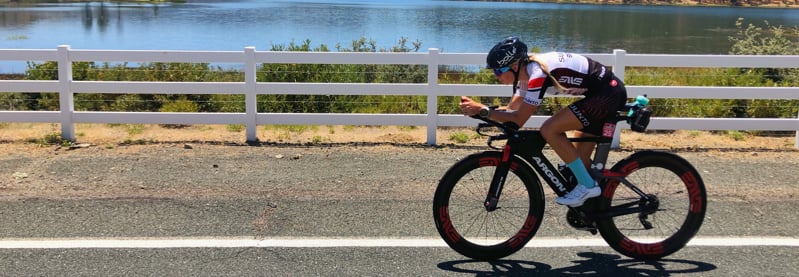
One triathlete’s journey through hell and back to the Kona start line
In 2014, a truck smashed into American triathlete Kelsey Withrow throwing her life to go into a tailspin. She endured bravely and will be on the Kona startline this year.
Doctors told her she would never run or race again. Kelsey, then 31, was lying in a hospital bed, her body battered and bruised after a truck hit her, and her vision for her life in ruins. She decided to prove the doctors wrong.
After recovering from the accident Kelsey drove herself hard. She refused to give up. While the determination was admirable, she now admits it bordered on reckless.
“I spent the next year trying to come back, but was plagued with more injuries and frustration,” Kelsey explains. “I gained a lot of weight and fell into a depression where I coped by going out at night, drinking way too much, and just not really living life as a pro athlete.”
Kelsey began swimming competitively when she was six years old. Later at college, she competed in Division 1 before moving to the Olympic Training Center in Colorado Springs as a member of the USA Triathlon National Team. She completed her first triathlon as a senior high school student in 2001, and was hooked.
With her life in tailspin after the accident, Kelsey got close to quitting triathlon. But then she met Mike, her now coach and boyfriend, who helped her turn everything around.
“The new path I chose to go down was life changing, but not easy,” she says. “Mike got me healthy for the first time years. But when I did decide to start racing again, I was in for a rude awakening. I moved up from ITU (International Triathlon Union races) to the 70.3 distance and finished dead last in most of those races.”
She was going in the right direction. But some old bad habits were holding her back. Eventually Mike gave her an ultimatum: get a job and make triathlon a hobby or commit 100% and make triathlon her job. “It took a good week for me to decide to go ‘all in’, but when I did, everything switched for me,” she says.
The decision empowered her; in 2017 she won her first Ironman 70.3 at Victoria, then backed that up with a win at Ironman 70.3 Manta the following weekend. She has been on the podium at almost every race since, securing her first Kona slot this year at age 36.
“This just goes to show you that if you work really hard and don’t give up, amazing things can happen!” she says.
Kelsey takes over our our Instagram stories this weekend. Follow along as she prepares for Kona!
READ ALSO
How (not) to qualify for Kona
Road to Kona: Cody Beals' clear race strategy
Road to Kona: 5 tips to train effectively as a couple
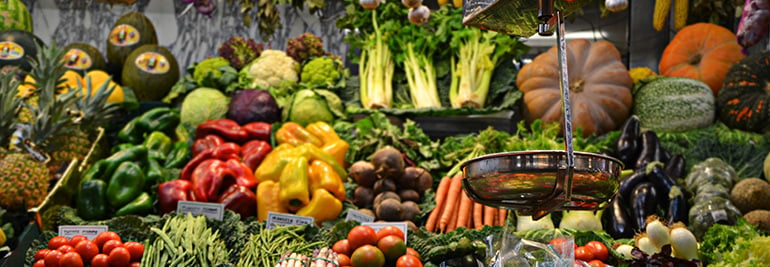
Fuelling the engine: 6 principles of nutrition for athletes
When she's not in the mountains, you can find Emelie Forsberg in her garden or preparing delicious meals. © Matti Bernitz
How and what we eat is personal to each one of us. Some of us feel better and more energised by certain foods, while others feel quite differently. Regardless of our personal view, one thing we all have in common is that eating well is essential for top performance.
In our recent article series “Fuelling the engine” we heard from eight athletes and trainers about how they stay fuelled (see the end for the article list). What’s more interesting than their differences, is what they have in common. We’ve combed through and put together six basic principles of nutrition for athletes.
Find your rhythm
Suunto HQ is lucky to have in-house personal trainer and athlete Matias Anthoni walking around the office. He offers training and nutrition advice to whoever is interested. He says improving how often you eat can improve what you eat. Skipping meals is a no-no for dedicated athletes because it causes energy crashes and bad dietary decisions, which result in poor performance. He advises to get into a rhythm of having a healthy meal every three hours.
Get organized
To eat six or more well balanced meals a day demands forward planning. It’s pretty hard, if not impossible, to maintain this if you’re operating on a day-to-day basis. Ryan Sandes, Emelie Forsberg, Mel Hauschildt and Lucy Bartholomew all emphasised the importance of being well organised and planning ahead. They sometimes make extra portions of meals at the beginning of the week to have later in the week when they know they will be busy. Being organised means making sure there are plenty of easy, go-to meal ingredients available, too.
Balanced meals
There are a number of different aspects to having a balanced diet. Ultracycling man Omar di Felice sees it as maintaining a proper balance of carbohydrates, protein and fat, with fatty food being essential for his epic extreme rides above the Arctic Circle every winter. This balance of carbohydrates, protein and fat is what nutrition expert Dr. Rick Kattouf II also drills into his clients. He believes every meal – for dedicated athletes in training – should include this ratio: 50 to 60 % carbohydrates, 15 to 25 % protein, and 15 to 25 % fat. Balance also means eating a variety of foods to make sure you are taking in enough minerals and vitamins. Ski mountaineer Greg Hill tries to have a balance of colors in his meals.
Fresh is best
One thing that came through loud and clear from all our athletes and experts is the importance of eating fresh foods. For Emelie Forsberg and Lucy Bartholomew this means preferably straight out of the earth. As an avid gardener and farmer, Emelie grows and harvests much of what she eats. Lucy, ski mountaineer Greg Hill, Mel and Ryan all try to avoid eating packaged foods, instead choosing foods that are as close to the source of production as possible.
Whole is the goal
Should go without saying: avoid processed food and food with refined sugar. Instead, all our athletes opt for whole foods. Ryan Sandes questioned the idea that recovery shakes could ever replace the nutritional value of whole food. Don't take shortcuts; take the time to eat well. It’s self kindness.
Enjoy yourself
Emelie, Ryan and Greg all said they don’t get uptight about food. Emelie has a relaxed and intuitive approach to food, and Ryan and Greg are happy to allow themselves to enjoy a pizza or a burger each week. Greg cautions not to try to be perfect; aim to make the bulk of what you eat fresh and healthy. “It’s important to enjoy life as well,” Ryan says.
Click below to read articles in our Fuelling the Engine series:
Fuelling the engine: talking nutrition with Lucy Bartholomew
Fuelling the engine: talking nutrition with Emelie Forsberg
Fuelling the engine: a commonsense approach to nutrition
Fuelling the engine: talking nutrition with Ryan Sandes
Fuelling the engine: talking nutrition with Ultracycling Man
Fuelling the engine: talking nutrition with Mel Hauschildt
D.I.E.T (disaster imminent every time), and three unchanging principles of nutrition for athletes
Fuelling the engine: talking nutrition with Greg Hill
Lead images:
Photo by ja ma on Unsplash
© Craig Kolesky / Red Bull Content Pool

6 ways to find new MTB trails (that don’t involve Google)
Reaching for the Google is an instinctive impulse to answer almost every question that pops into our heads. With countless important questions, such as, “what is the world’s ugliest dog?”, or, “what to do if a ginger kid bites me?”, the internet has an answer for everything.
Yes, it’s also a valuable place to search for new MTB trails. But sometimes what is mirrored back is impersonal, superficial and without context. It lacks the richness that comes from hearing from a real person. Ask any investigative journalist, and they will tell you, you can only get so far with Googling; finding people to talk to is where the real story is.
To help you get the scoop on the most awesome local trails, we’ve put together a list of sources to consult.
Talk to your local bike shops
Bike mechanics and retailers talk to local trail aficionados everyday on the job. Chances are they are one themselves. Take your bike in for a tune up, and strike up a conversation about the local trails. Make your question personal, rather than general: where are your favorite places to ride around here? Many shops organize group rides for their customers.
Visit your local MTB club
This will be a goldmine of intel. Most larger cities have MTB clubs or meetups, which usually have club outings and meetings. Get in touch, go along on a ride. Usually every club has a few people who all the other members revere as gurus of sweet trail. Volunteer for trail maintenance work that trail advocacy groups and clubs do. When you give, you are also more likely to receive!
Stop and say hello
If you’re out on a trail and cross paths with another MTBer, greet them and strike up a conversation. He or she might have some trail secrets to share that could open your horizon of biking possibilities.
Check out our heatmaps
The Suunto app’s Heatmaps feature allows users to select different activities – mountain biking, hiking, running and so on – to find places and trails popular with other users. Zoom in and look more closely at the paths, switch to satellite or terrain maps, to see whether the paths are forest roads or single trails and to better gauge popularity. And look at where people aren’t riding; maybe there’s something worth exploring there? Another trick is to switch to the trail running heatmap because trail runners usually prefer single trail – this might help you hone in on the best rides.
Follow other riders in Suunto app
In addition to using heat maps to find places to ride on Suunto app, get social: start following other Suunto app users, engage with them and see where they ride. You can create routes based on your friends’ activities and sync those to your Suunto for navigation.
Import routes from Strava
You can find awesome rides by following people on Strava. You can then save their routes and use them in your Suunto for navigation. You can also find and create routes and sync them to your Suunto with other external route tools or services, such as Komoot, Outdoor Active and Wikiloc.
